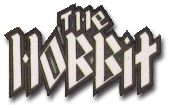melbourne house |
THE HOBBIT DATA FORMAT this document contains the data format for the hobbit, it is not complete but gives a good start and understanding. for further information download HOBBIT source this may help fill in some of the blanks. should you find any errors with this document or indeed have any information to add, please send me an email. |
